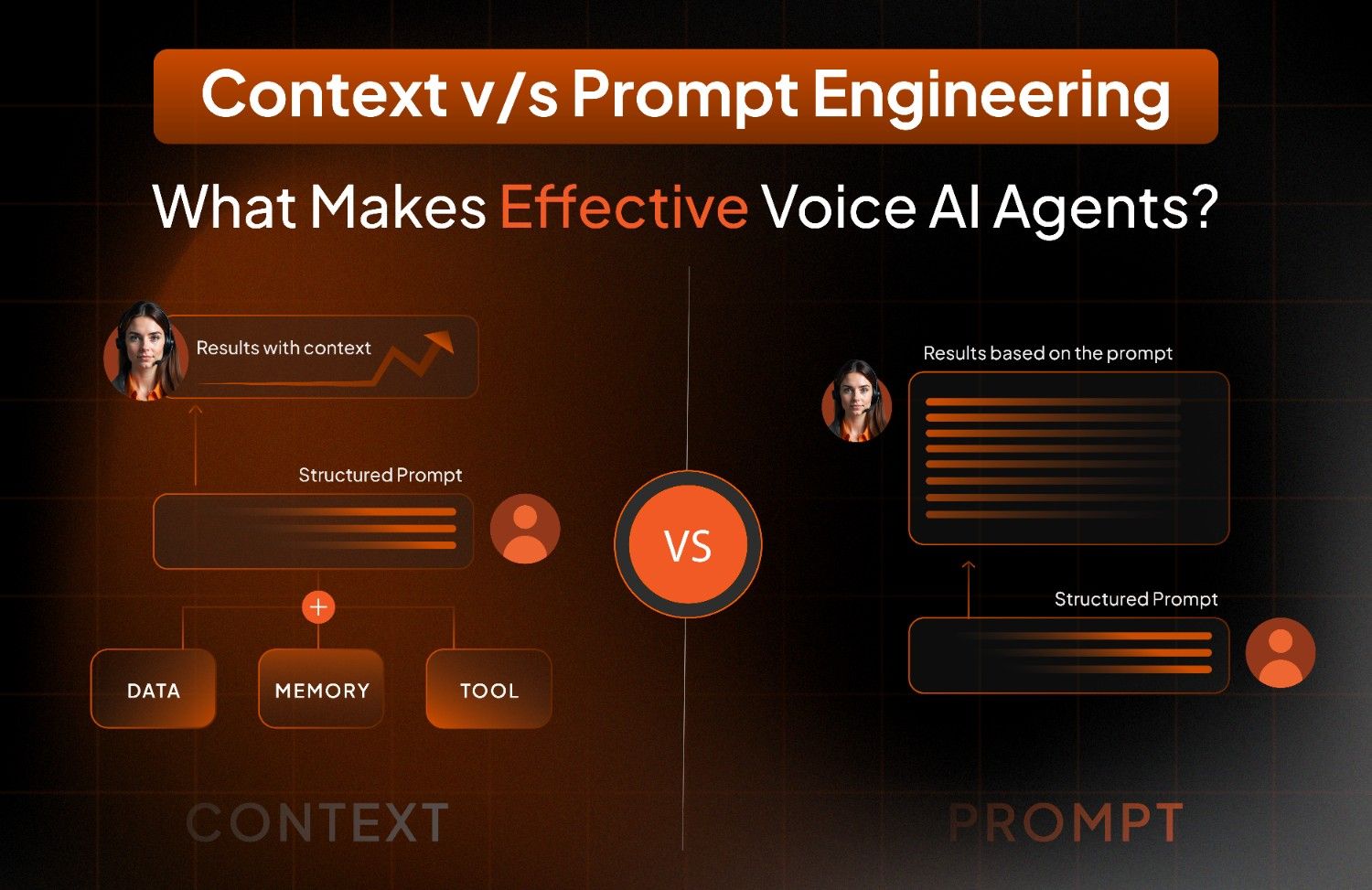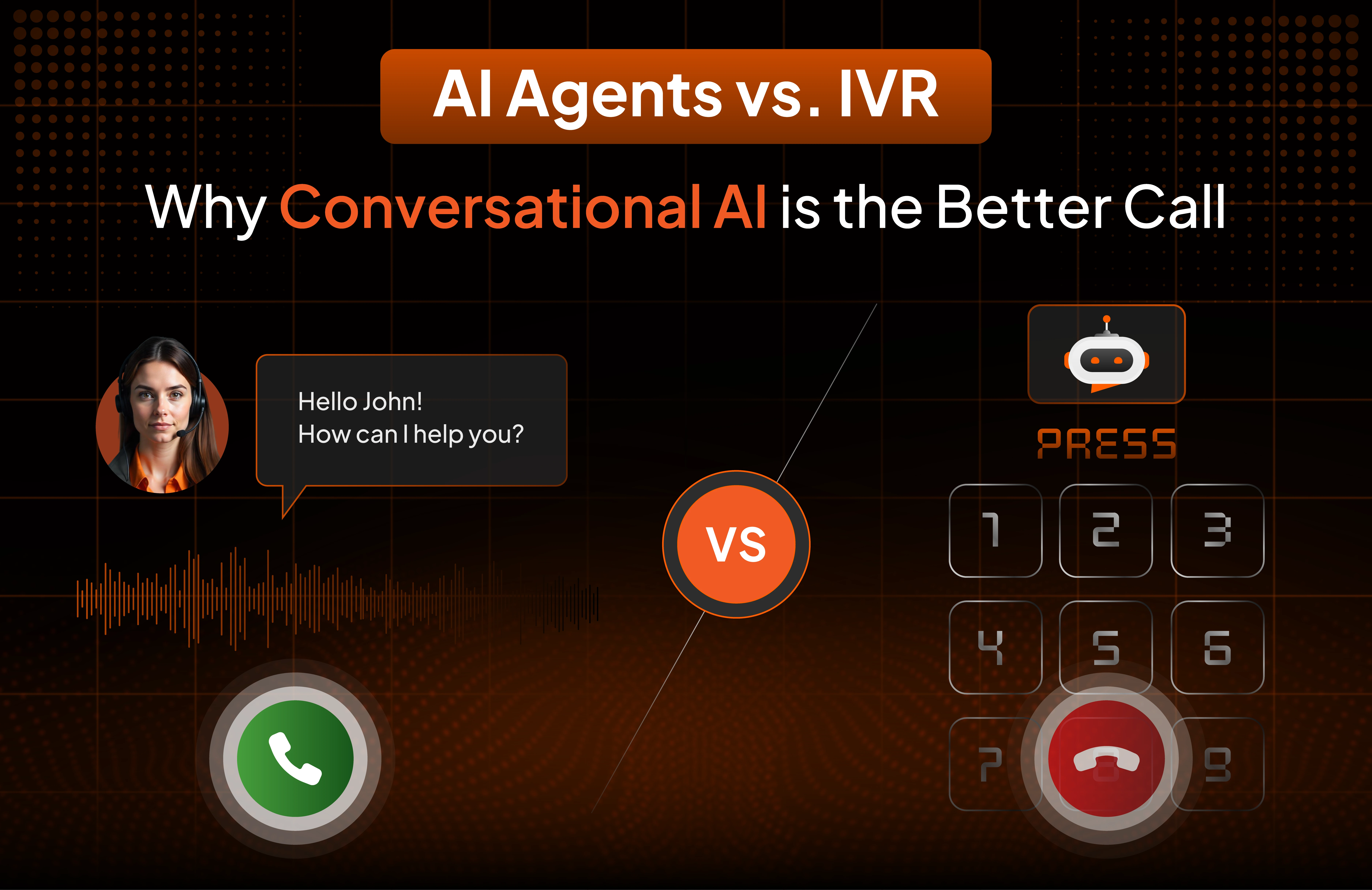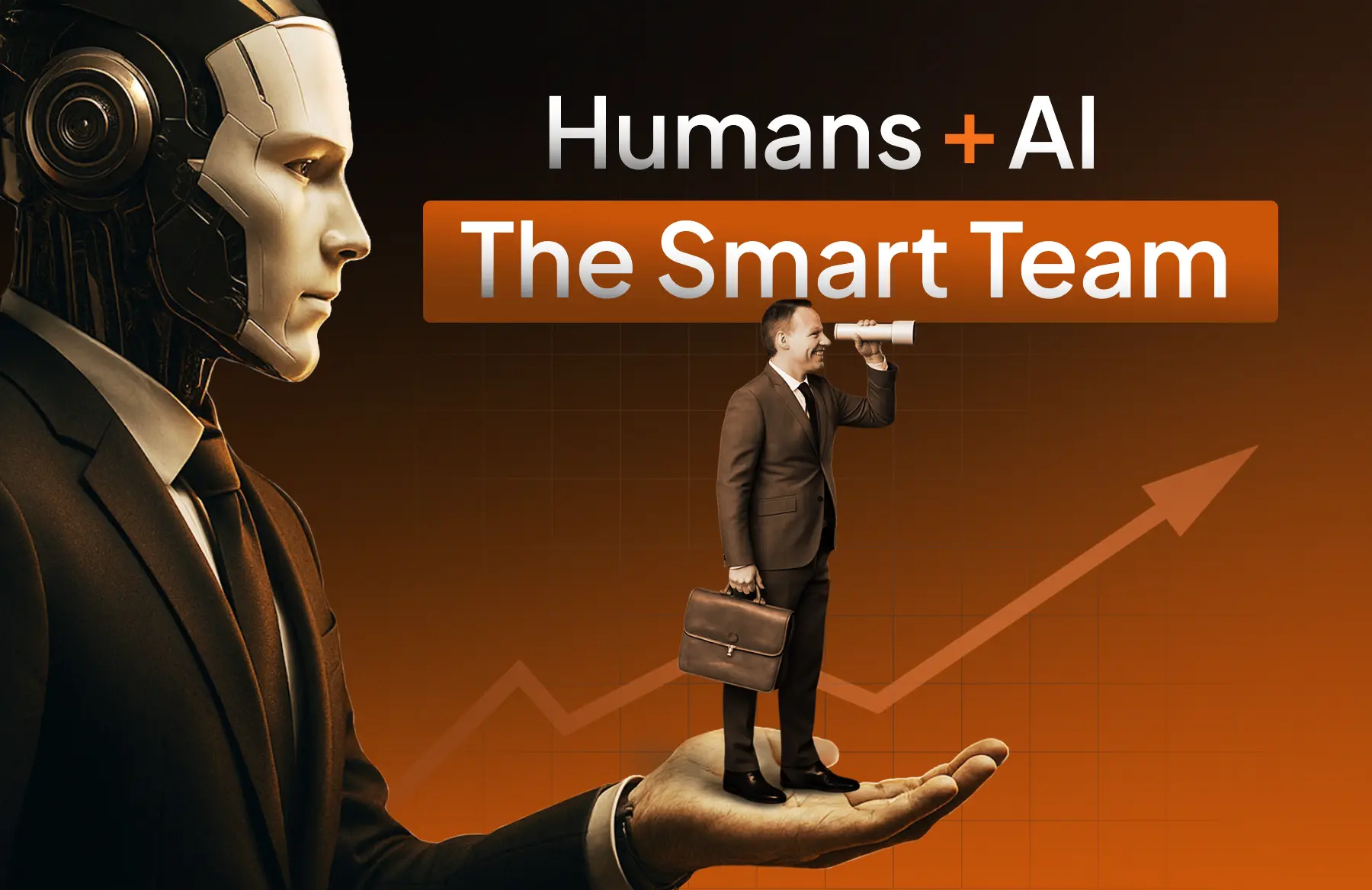Articulation is the ability to express an idea clearly and coherently. It is a foundational skill that sets good apart from the great. Yet, it is a rare commodity. Studies indicate that nearly 50% of adults in developed countries struggle with reliable articulation. Imagine if humans face communication challenges, the task of instructing an AI Agent to do something becomes a hurdle.
The success with AI isn’t just about finding magical words; it’s about mastering the art of articulation. The rare skill, when applied to AI agents, requires attention to both the immediate command and the entire environment.
- Clarity via prompt engineering
- Context via context engineering
These are the twin engines that deliver high impact to your AI agents. When combined, their output for Voice AI agents can make them sound human-like, reliable, empathetic, and more than just a script reader. Their role shifts towards being an assistant to your human teams. Essentially, it ensures their relevance to the business and cements their role in creating efficiencies for you.
Let’s understand how you can maximize the output of your Voice AI agents in this blog.
What is Prompt Engineering?
Prompt engineering is the art and science of carefully designing the immediate instructions given to an AI model to control its behavior and output.
It focuses on what to say now and how to say it. For effective Voice AI agents, your prompts must include the following parameters:
- Professional Consistency: Defining the agent's tone (e.g., "empathetic yet firm") and brand voice.
- Behavioral Boundaries: Setting guardrails, such as prohibiting the AI from offering legal advice or discussing unrelated topics and ensuring compliance (For eg. In case of debt collection it would be complying with laws like FDCPA, TCPA, CFBP, etc.).
- Desired Output Format: Guiding the AI on how to handle the conversation by designing the flow, setting escalation matrix, or complex phrasing.
Prompt engineering is the foundation that helps design the agent’s task, personality and its rules of engagement for a single interaction.
What is Context Engineering?
Context engineering is the systematic discipline of designing the entire information environment that an AI operates within. It's about providing the AI with the system-level memory, real-time data, and tools it needs for intelligent, continuous decision-making across an entire conversation or relationship.
Context engineering answers the question: What does the AI know and remember when it is responding?
This includes:
- Dynamic Information Assembly: Pulling in real-time customer data (e.g., account balance, missed payment details, last payment date, recent service tickets).
- Multi-Source Integration: Connecting the AI to external tools like CRM systems, company knowledge bases, compliance documents, and best practices.
- Temporal Awareness: Maintaining memory of what was discussed earlier in the call or in previous calls with the customer.
Context engineering gives the AI situational awareness, allowing it to adapt its behavior instantly based on current variables.
Is Prompt Engineering Enough Today?
The simple answer is no.
While it sets the foundation, it has limitations that may impact performance in the real-world enterprise use cases:
1. Why Failures Occur: Context Over Code: Most AI agent failures today are not due to the model misunderstanding a single instruction, but rather failing to access, maintain, or use the relevant external data. The agent often forgets its tasks, key customer details or policy requirements mid-conversation.
2. Dynamic Customer Needs: A static prompt cannot anticipate and account the infinite variations and scenarios of customer questions, emotional states. Without dynamic context, the AI's response will feel impersonal, mundane, and lack the touch of what makes it human-like.
3. Compliance and Scalability: Regulated industries like debt collection, mortgage, insurance or BPOs require Voice AI to adhere strictly to constantly evolving rules. Context engineering ensures that the required compliance language, audit trails, and policy-based escalations are embedded in the system architecture, not just hoped for in a prompt.
The hard truth is: Prompt engineering might get you the first good output, but context engineering makes sure the 1,000th output is still good.
Prompt vs. Context Engineering: A Comparison

The Winning Combination: Context + Prompt for Reliability and Relatability
The most successful Voice AI agents strategically combine both techniques, recognizing that for better output, they are the two parts of one intelligent system.
- Prompts Define Behavior: Used to establish the agent's role, personality, brand voice, and high-level behavioral boundaries.
- Context Enables Intelligence: Used to provide the dynamic information access, memory, tool integration, and policy adherence needed to execute that behavior accurately.
This combined strategy achieves the two critical goals for enterprise-grade AI:
1. Reliability (Context-Driven): The Context Engine provides real-time access to factual data, tool integration, and policy guides, ensuring the AI gives correct information and adheres to compliance standards every time.
2. Relatability (Prompt-Tuned): The Prompt defines the personality and tone, while the Context allows for dynamic personalization (using customer name, referencing history), enabling human-like conversational quality. Helping your brand deliver consistent customer experiences, irrespective of the customer’s queries, and leaving behind a remarkable brand impression.
Example: What does a good prompt look like?
Scenario: An AI voice agent is tasked with reminding a cohort of customers about their upcoming bill due this Friday.
Disclaimer: This is just an example and not a real-world scenario of how a good prompt should be.
The evolution from prompt engineering to context engineering represents a need to deal with customers in a more human way. By investing in a holistic approach that simultaneously refines the AI’s voice (prompt) and enriches its knowledge base (context), organizations are seeing:
- Double-digit percentage improvements in collection rates and first-call resolution.
- Significant cost reductions through reduced Average Handle Time (AHT) and fewer escalations.
- Unwavering compliance across hundreds of thousands of calls.
The companies winning with Voice AI are paying attention to more than just efficiency. They are securing a competitive edge by treating it as a critical touchpoint and curating a customer experience that leaves an impact. They are moving beyond simple conversation and engineering context to build smarter, more reliable business multipliers.
In case you need reliable, flexible, and highly effective Voice AI agents, Vodex is your best bet. Schedule a demo today.


.jpg)







.png)



%20(4).webp)
.png)
-min.png)



